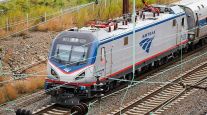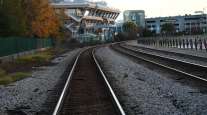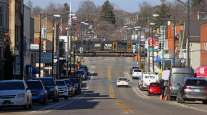Amtrak Blames Freight Trains for Passenger Delays Getting Worse
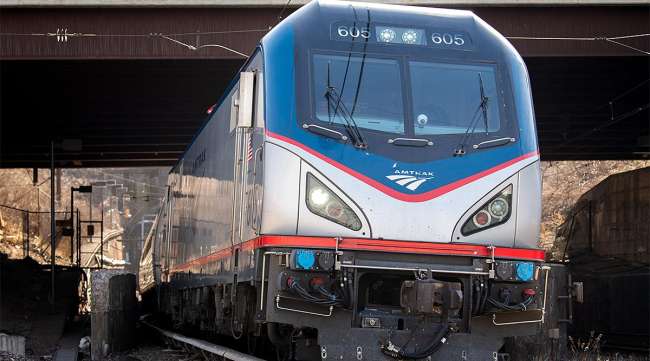
[Stay on top of transportation news: Get TTNews in your inbox.]
Americans who travel by train know all about this: Never in history has Amtrak been more popular. But never has Amtrak been so late.
The nation’s passenger rail system is breaking attendance records. Yet, its “on-time performance” is sliding to new lows. And the trains late most often? Late so often, you can check your watch and count on a late arrival? They’re in Michigan.
Across the country, Amtrak trains last year were on-time only 60% to 70% of the time in many states, although on-time performance rose to more than 90% in the nation’s northeast corridor, from Washington, D.C., to New York City.
In Michigan, the on-time rate was only 43%. And on the troubled route from Chicago to Detroit to Pontiac — the state’s busiest Amtrak route — on-time performance was a pitiful 33%. Put another way, that means that 67% of the trains on that route were at least 30 minutes late, and many arrived much later.
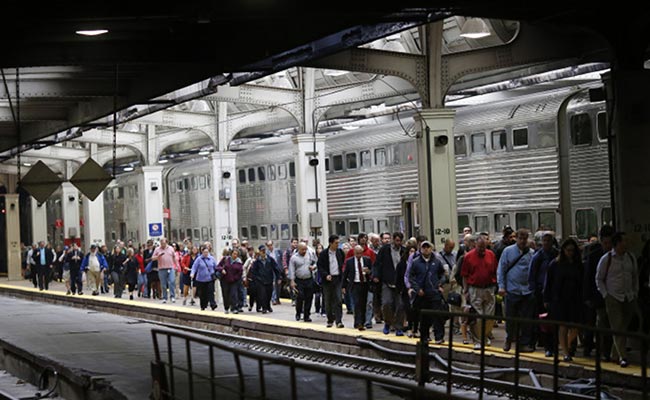
Passengers wait for a train at Union Station in Chicago. (Luke Sharrett/Bloomberg News)
This year, Amtrak hopes to change that. Officials with the nation’s passenger-rail system say that, if enough Americans contact their members of Congress — and Amtrak’s website explains how to do that — that speedy passenger trains could regain the historic priority they once wielded over creeping freight trains, when both vie to use the same tracks.
But until lawmakers restore to Amtrak what the railroad industry calls “track preference,” passengers must take their chances with trains that are routinely late, and sometimes very late.
Amtrak’s “on-time” performance record is even worse than it looks. In air travel, a plane is considered “late” by the U.S. Department of Transportation if it arrives 15 minutes or more after its scheduled time. Amtrak stretches that to 29 minutes. Yet, even with that half-hour grace period, the nation’s passenger-rail system has had trains arrive later and later over the last decade. That trend coincides with the swelling number and length of freight trains.
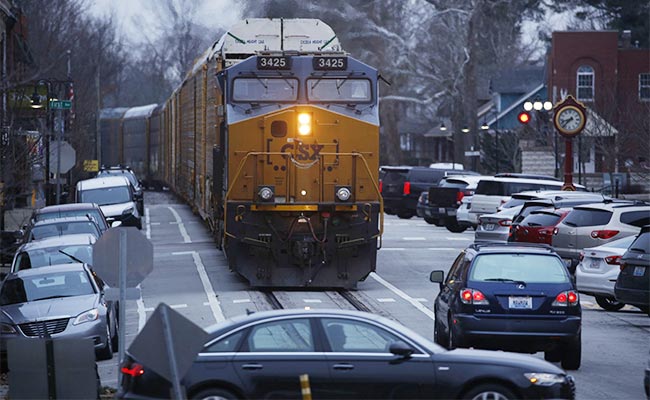
A CSX Transportation mixed freight train mixes in with automobile traffic in La Grange, Ky. (Luke Sharrett/Bloomberg News)
Because the freight railroads own 97% of the tracks that cross the U.S., Amtrak must rely on the freight dispatchers to decide when to let passenger trains through. Increasingly, despite a federal rule that gives passenger trains “preference,” Amtrak’s trains are being forced to wait unfairly, according to Amtrak officials.
The problem of late train arrivals has gotten so bad that Amtrak dramatically changed its public stance, after years of glossing over train tardiness. These days, Amtrak’s website explains in detail the dilemma of seeing freight trains given “preference” over trains with passengers. Amtrak even has a YouTube video highlighting what’s going on, and asking the public to alert their lawmakers in Washington.
The video, titled “Your Right to be On Time,” says that more than 32 million people a year take Amtrak trains, yet “sometimes that ride is delayed and it’s time you knew why.” It goes on to blame occasional delays on weather, track maintenance, mechanical problems with trains and obstructions on the track, then points a finger at the main culprits.
“Usually, it’s what we call freight train interference. That’s when our trains are delayed by slow freight trains ahead of them.”
Although federal law gives passenger trains priority, even when they’re rolling on tracks owned by a freight railroad, “it doesn’t always work out that way,” the video says. It continues: “The law is on the books but the freights often ignore it. Congress can fix that. Tell your member of Congress … to support legislation that puts people before freight.”
Now is a timely moment for Amtrak fans to register their wishes, Amtrak officials say. This spring, Congress is scheduled to renew Amtrak’s five-year funding measure, and that’s when the passenger system’s executives hope to get the legal leverage to better deal with freight railroads, says Marc Magliari, spokesman for Amtrak in the Midwest.
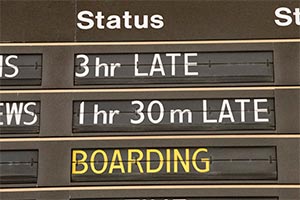
A board shows delays at Amtrak's 30th Street Station in Philadelphia. (Matt Rourke/AP)
“It’s a very important issue to us because our reliability is suffering,” Magliari said.
The freight railroads, represented by a large trade group called the AAR — the Association of American Railroads — say one answer would be for the federal government to put money into new tracks and into longer sidings where modern, extended-length freight trains could park as Amtrak passes.
“It would be nice to see the public coming forward” — that is, with federal and state dollars — “where they have an interest in keeping passengers trains operating,” said John Gray, senior vice president for policy and economics for the freight railroad group in Washington.
Most of the support for giving more funding to Amtrak has focused on providing more operating money and more cash for better locomotives and train cars. Last year, with Amtrak boasting of an all-time record volume of 32.5 million passenger trips, the system also logged an operating loss of $30 million, the smallest loss in the system’s 49-year history. There is talk that Amtrak could break even next year, although it would still require large subsidies of taxpayer dollars.
Meanwhile, the freight systems get busier by the week.
Host Seth Clevenger went to CES 2020 in Las Vegas and met with Rich Mohr of Ryder Fleet Management Solutions and Stephan Olsen of the Paccar Innovation Center to discuss how high-tech the industry has become. Listen to a snippet above, and to hear the full episode, go to RoadSigns.TTNews.com.
Congress will take up the latest five-year renewal of Amtrak’s funding as part of Uncle Sam’s massive Surface Transportation Reauthorization, said Sean Jeans-Gail, spokesman for a nonprofit group that advocates in Washington on behalf of rail passengers.
“Most of this will be about highways, but Amtrak is a piece of that puzzle,” said Jeans-Gail, vice president for policy and government affairs with the Rail Passengers Association.
“They’re going to need to do something to address preference,” he said. “We want to tell our members who are missing events, missing connections, can’t use Amtrak to get to business meetings on time, you need to speak up and get heard with your member of Congress.”
“People can go to www.RailPassengers.org to find out how you can support the Rail Passenger Fairness Act,” he said.
A spokesman for U.S. Sen. Gary Peters (D-Mich.) said Peters has met recently with Amtrak’s CEO about late trains. Peters, a member of the Senate Commerce, Science and Transportation Committee, said in a statement to the Free Press: “It’s clear that the system has not been working for passengers and changes are needed.”
Amtrak’s website says the system’s engineers are ready to unleash faster trains with new locomotives. But for now, Amtrak would be happy simply to reverse its worsening slide in on-time performance. To do that, it needs a mandate from passengers, the general public and Congress, Amtrak’s Magliari said.
“We don’t have to be going 110 mph to give you a much better experience than driving,” he said, in a telephone interview he gave while riding from Chicago to St. Louis last month.
“All we have to be is reliable, with attractive fares and schedules that make sense,” he said. “It’s within reach.”
Want more news? Listen to today's daily briefing:
Distributed by Tribune Content Agency, LLC



